Orchids are often seen as the crown jewels of the houseplant world, thanks to their graceful blooms, exotic appearance, and long-lasting flowers. While they may have a reputation for being tricky to care for, orchids—especially Phalaenopsis orchids (moth orchids)—are surprisingly resilient once you understand their needs. The real secret lies not only in keeping them alive but in encouraging them to bloom beautifully year after year.
If you’ve ever wondered how to keep orchids blooming longer indoors, this guide will take you through the essentials—light, water, humidity, feeding, and care routines—to help your orchids thrive and reward you with stunning flowers for months.
1. Choosing the Right Orchid for Indoors
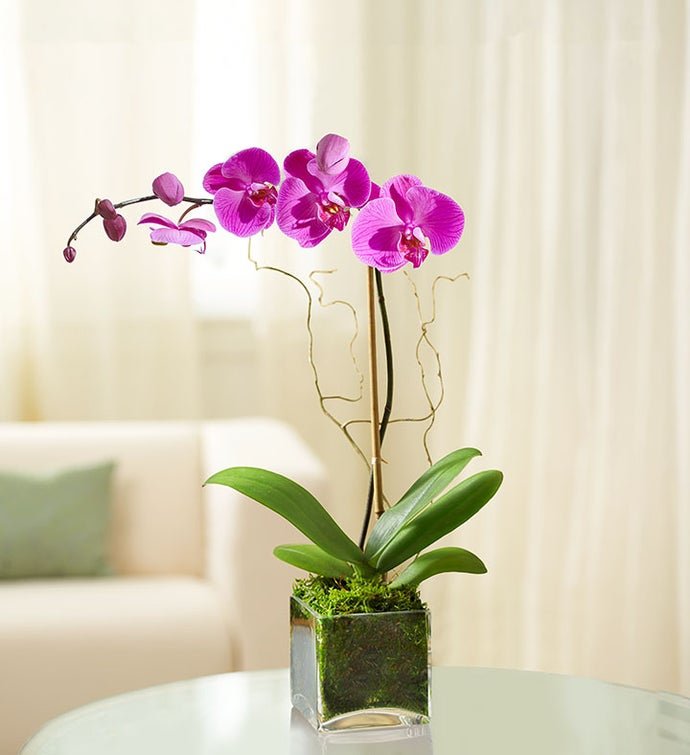
Not all orchids adapt equally well to indoor growing conditions. The most common and beginner-friendly choice is the Phalaenopsis orchid, which blooms for months at a time and is tolerant of average household environments. Other good options include Dendrobium and Oncidium orchids, but these may require slightly more specific conditions.
When purchasing, look for:
- Healthy green leaves with no spots or yellowing.
- Firm roots, often visible through clear plastic pots.
- Blooms that are partially open—so you can enjoy flowers longer at home.
2. Light: The Key to Blooms
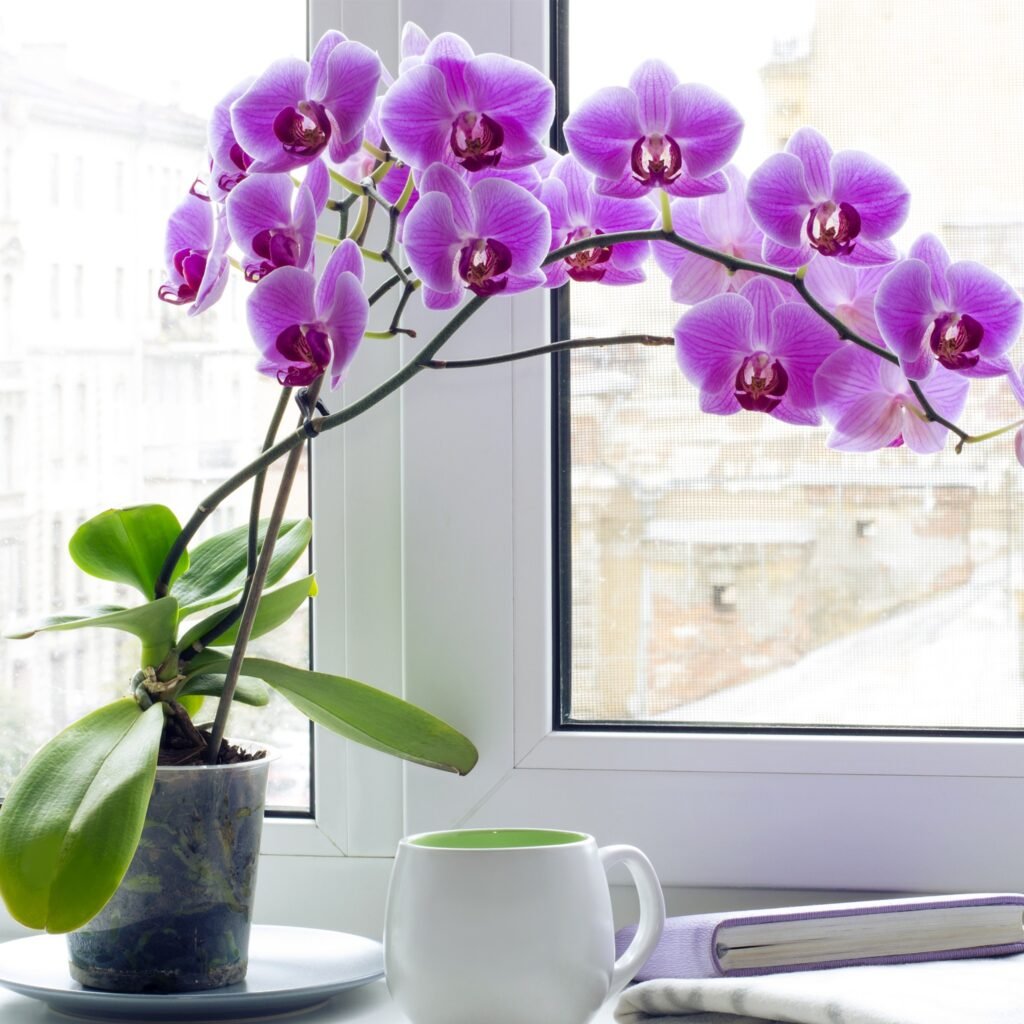
Orchids thrive in bright, indirect light. Too much direct sun can scorch the leaves, while too little light prevents blooming.
- Best placement: An east-facing window is ideal, as it provides gentle morning sunlight. A south- or west-facing window can work too, as long as you filter the light with sheer curtains.
- Signs of light problems:
- Dark green leaves = not enough light (orchids should have medium-green leaves).
- Yellow or reddish leaves = too much light.
If natural light is limited, especially in winter, consider using grow lights to keep your orchids thriving year-round.
3. Temperature and Air Circulation
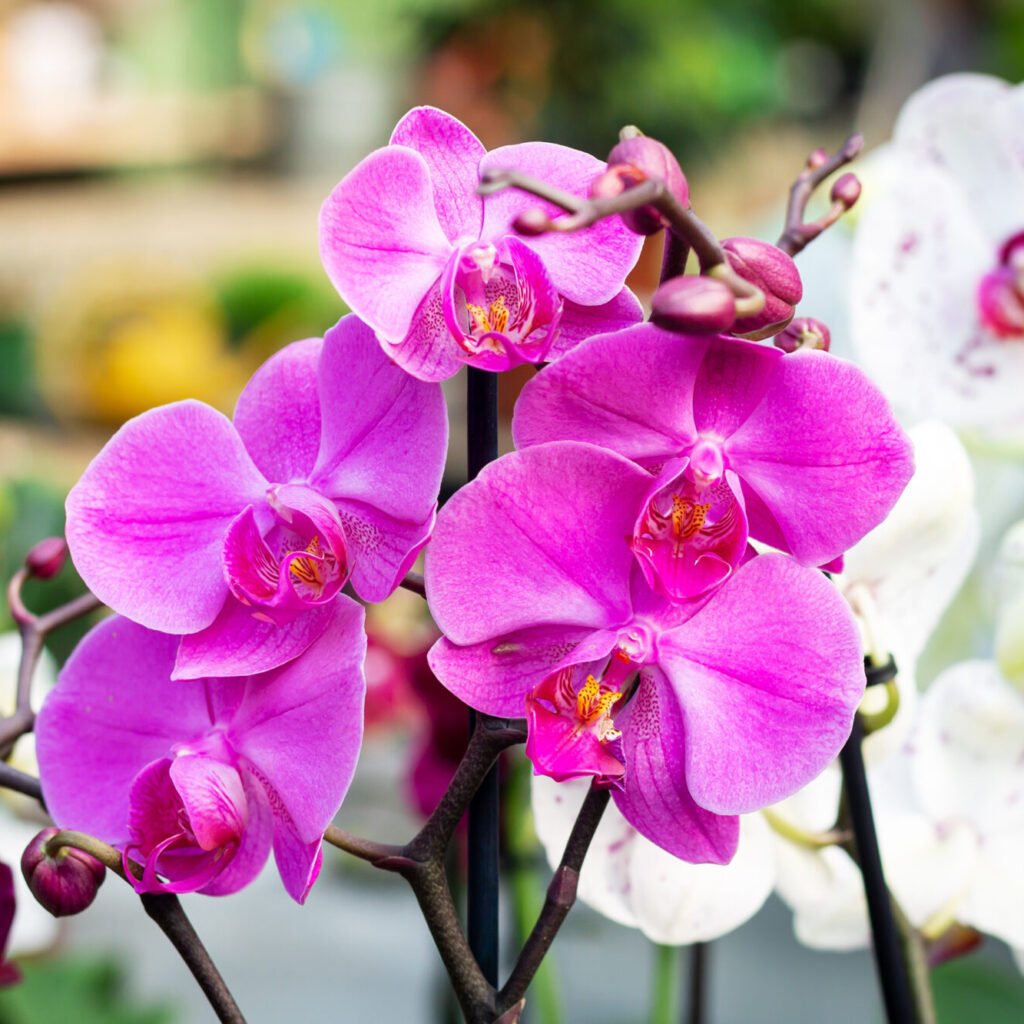
Orchids prefer a balance between warm days and slightly cooler nights. This day-night difference encourages flower spikes to develop.
- Ideal temperatures:
- Day: 70–80°F (21–27°C)
- Night: 60–65°F (16–18°C)
- Airflow: Good air circulation helps prevent fungal diseases. Place a small fan nearby on a low setting to keep the air moving without creating drafts.
4. Watering: The Golden Rule
The most common mistake orchid owners make is overwatering. Orchids don’t like “wet feet,” as their roots need both moisture and air circulation.
- Watering frequency: Typically once a week, but it depends on your home’s humidity and temperature. In warmer, drier environments, you may need to water more often.
- Method:
- Water thoroughly until liquid drains from the bottom of the pot.
- Never let orchids sit in standing water—empty the saucer after watering.
- Tip: Stick your finger an inch into the potting medium. If it feels dry, it’s time to water.
Avoid watering with ice cubes (a popular internet myth). Orchids prefer room-temperature water, ideally filtered or rainwater, as tap water may contain salts and chemicals that harm roots over time.
5. Humidity: Creating a Tropical Vibe Indoors
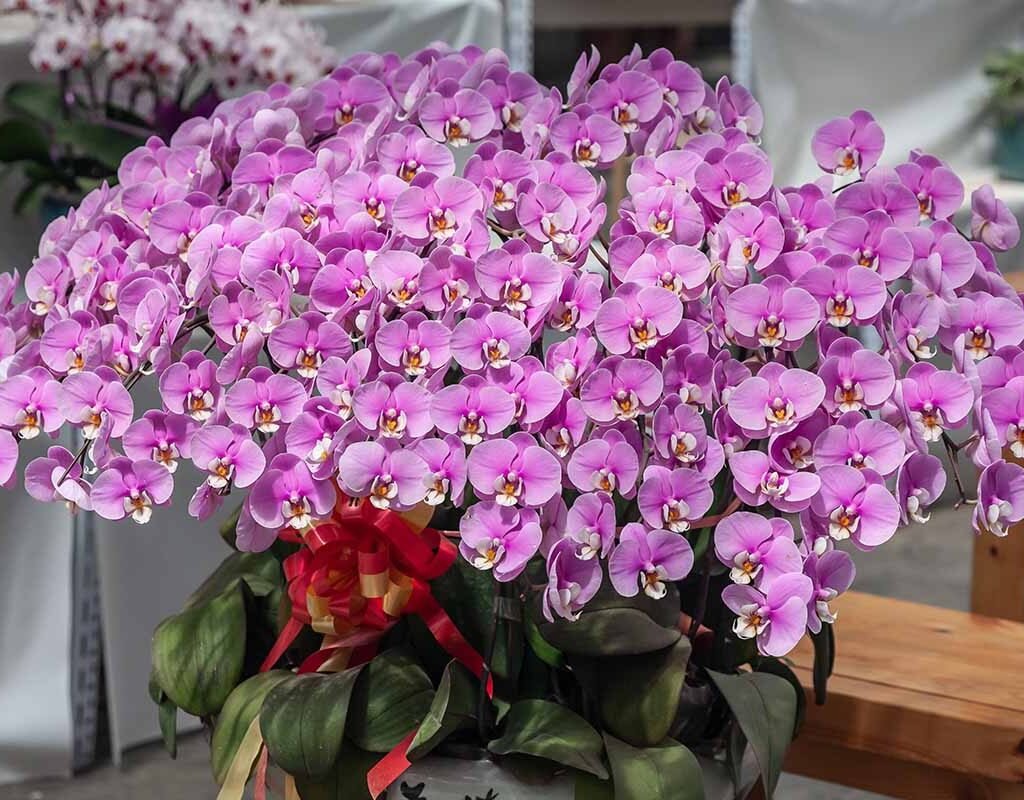
Orchids come from tropical climates, so they love humidity. Indoors, especially in winter, the air can get too dry for them.
- Ideal humidity: 50–70%
- Ways to increase humidity:
- Place a humidity tray (a shallow dish filled with pebbles and water) under the orchid pot, ensuring the roots don’t sit directly in water.
- Use a room humidifier, especially if you have multiple tropical plants.
- Group orchids with other plants to create a mini-humid microclimate.
6. Feeding Orchids for Healthy Blooms
To keep orchids blooming longer, they need consistent but gentle feeding.
- Fertilizer: Use a balanced orchid fertilizer (20-20-20) or one slightly higher in phosphorus to promote blooms.
- Frequency: Every 2 weeks during active growth (spring and summer), and once a month in fall and winter.
- Rule of thumb: “Weakly, weekly.” Dilute fertilizer to half or quarter strength before applying.
7. Repotting for Continued Health
Orchids need to be repotted every 1–2 years to prevent root rot and refresh the growing medium. They usually grow in a bark-based mix that breaks down over time.
- When to repot:
- After the orchid finishes blooming.
- If the potting mix looks compacted or broken down.
- When roots are overcrowded and spilling out of the pot.
- Steps:
- Gently remove the orchid from its old pot.
- Trim away dead or mushy roots.
- Place it in fresh orchid mix (bark, sphagnum moss, or a specialty orchid blend).
- Water lightly to settle the plant.
8. Extending Bloom Time
Orchid blooms can last anywhere from 2 to 4 months with proper care. Here’s how to make them last longer:
- Keep them away from drafts: Avoid placing orchids near heaters, vents, or cold windows.
- Stable environment: Fluctuating temperatures or moving them frequently can shorten bloom time.
- Support flower spikes: Use stakes or clips to keep long stems upright and prevent snapping.
- Avoid ethylene gas: Keep orchids away from ripening fruit, which releases ethylene and can cause blooms to fade faster.
9. Encouraging Reblooming
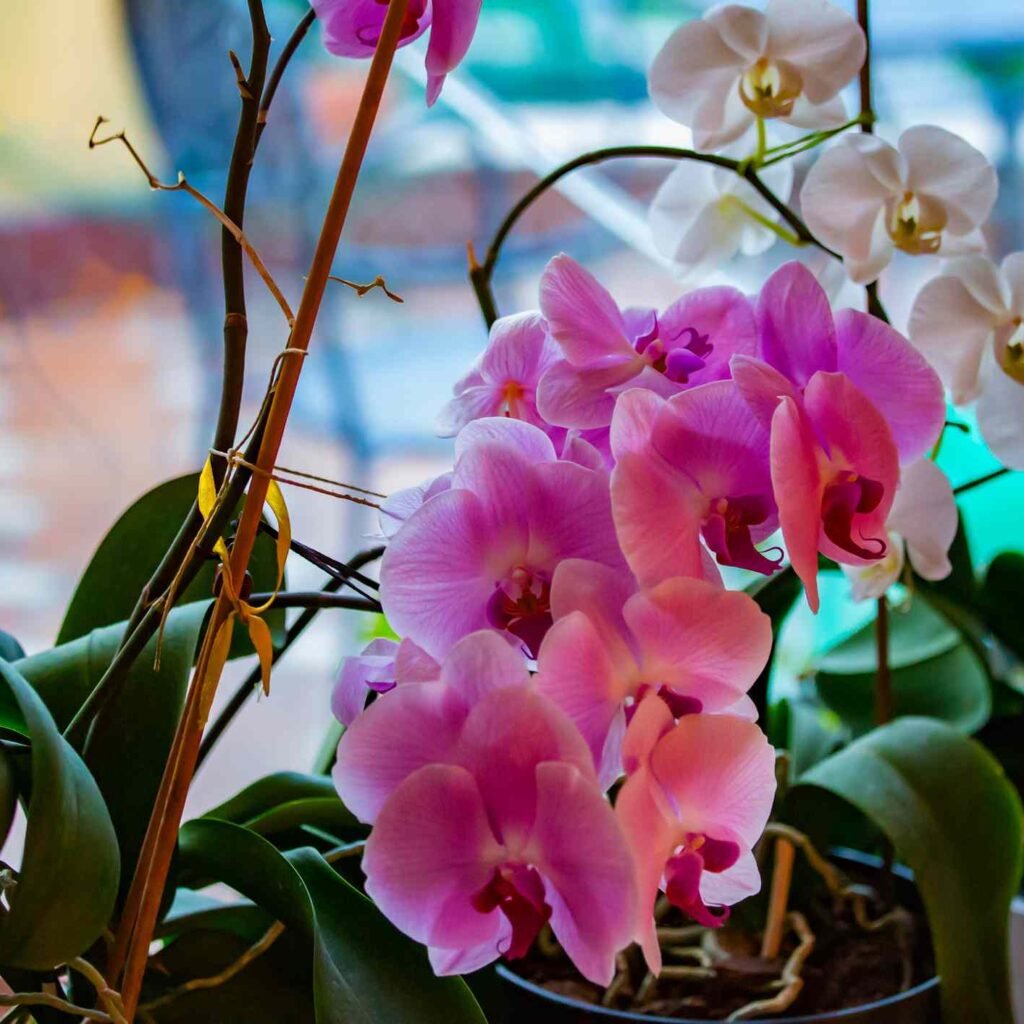
Once the flowers drop, your orchid can rebloom if given the right care.
- For Phalaenopsis orchids:
- If the flower spike is still green, cut it just above a node (a small bump). This can trigger new side shoots and more blooms.
- If the spike is brown and dry, cut it back completely to the base.
- Encourage a new spike: A drop in night temperature (about 10°F cooler than daytime) can stimulate orchids to produce a new flower spike.
- Be patient—reblooming may take several months.
10. Common Problems and Fixes
- Wrinkled leaves: Usually from underwatering or damaged roots.
- Yellowing leaves: Normal for older leaves, but if widespread, it may mean overwatering or poor light.
- Bud blast (buds falling before opening): Caused by sudden changes in environment, low humidity, or ethylene exposure.
- Root rot: From too much water or poor drainage. Repot and trim unhealthy roots.
Final Thoughts
Orchids may look delicate, but with the right care, they’re one of the most rewarding indoor plants you can grow. Their blooms can last for months, and with patience and attention, they’ll rebloom year after year. By giving them the right balance of light, water, humidity, and nutrients, you’ll enjoy not only long-lasting blooms but also the joy of seeing your orchid thrive in your home.
With these tips, keeping orchids blooming longer indoors doesn’t have to be intimidating—it can be a fulfilling experience that turns your home into a mini tropical paradise.
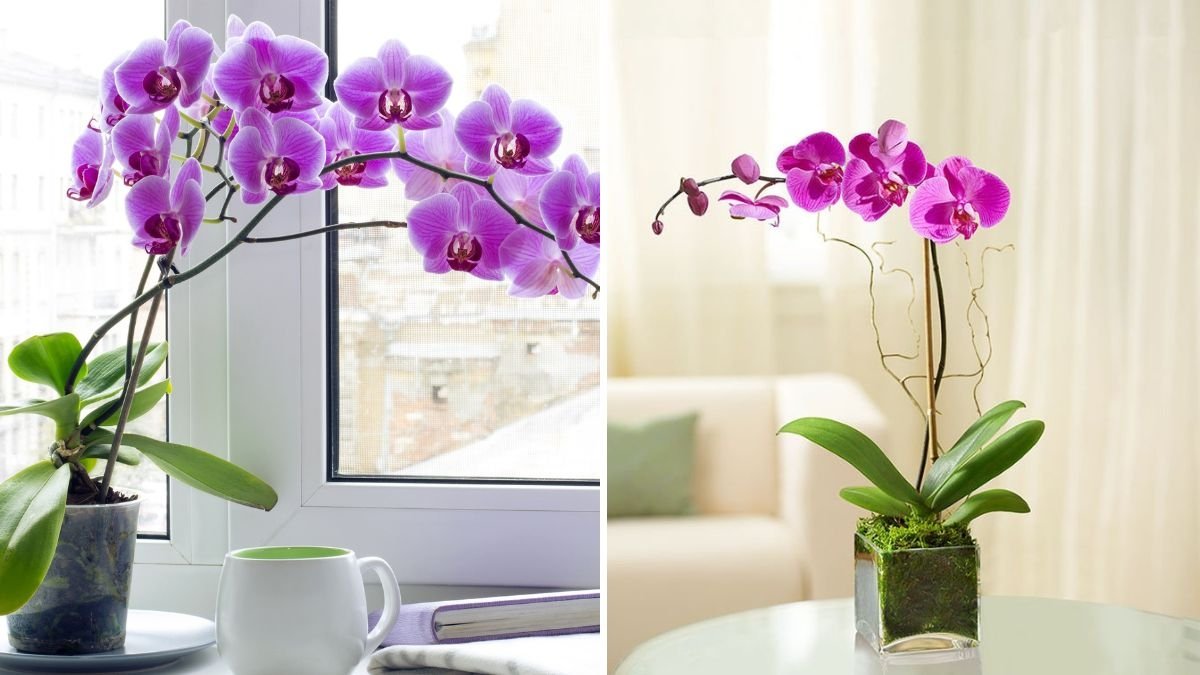




Leave A Comment